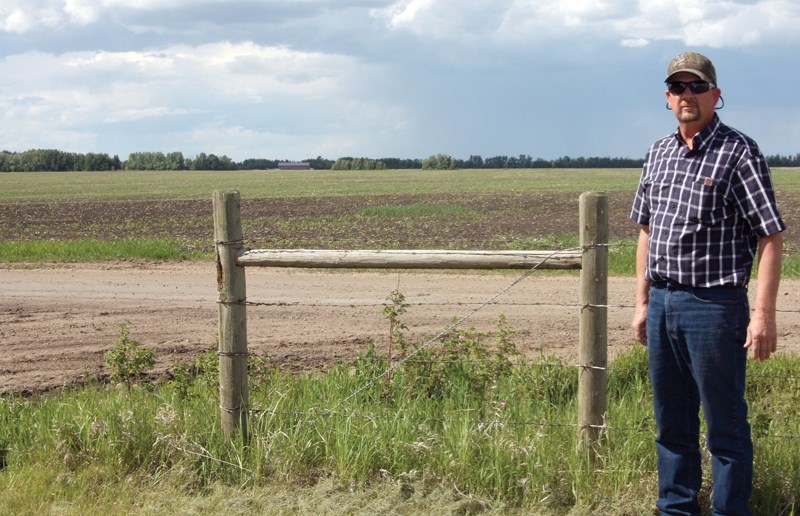Weed control, structural design safety and electromagnetic radiation are just a few concerns a local farmer has if a proposed power line project comes through Westlock County.
Lonnie Brown is one of many area farmers potentially affected by Alberta PowerLine’s proposed Fort McMurray 500-kV Transmission Project, a project that will connect a Leduc County substation to Fort McMurray.
After a more than a year of public consultation and information sessions, the Alberta Utilities Commission will ultimately decide if the project is approved, and if so, what route it will follow.
Two options have been presented; a west route through the County of Barrhead, and an east route through Westlock County. Alberta PowerLine has indicated its preference for the west route, however the commission is not bound by its selection.
Should the east route be approved, the line will cut through Brown’s century-plus-old farm and affect many other long-standing farmsteads.
“I think the first thing we have to come to grips with is in the Westlock area and kind of where this route is going I notice it hits a large number of 100-year-old farms,” Brown said.
“This area isn’t littered with acreages, so our success is also our demise in this situation.”
Historical significance aside, the proposed route would see massive towers erected along his field and cut his farming and cattle operation in half.
While he has some concern about potential electromagnetic radiation emitted from the lines and its effect on his cattle, the massive structures supported by guy-wires would take up an enormous footprint and be a headache to farm around.
“No one wants it in their backyard. My argument isn’t any different than anyone else’s when it comes to that,” Brown said.
“When it comes to the agricultural side, being able to keep that land productive with these monstrous towers stuck in the middle becomes just a little bit harder.”
“How do you keep from hitting that with your equipment in the dark? There’s no visibility.”
Weed control underneath the towers is also a concern.
“It’s an obstruction and then you have to maintain the ground under that obstruction so it doesn’t become weed infested.”
Aside from concerns of under-maintained ground underneath, the power lines would prevent a local aerial crop sprayer from reaching several areas of his field.
“When we got into wet years, we’d just hire the airplane to spray our property. You put that through a field, no airplane is going through. He won’t go close to those power lines.”
While he won’t attend in person, Brown said he intends to file written evidence and will be represented by legal counsel hired by East Route Landowners Opposition Group (ERLOG) in the upcoming AUC hearing session.
The hearing was slated to begin June 6 in Edmonton, however, has been suspended due to the Fort McMurray wildfire and has not yet been rescheduled.
Ultimately, Brown said the process has been relatively fair so far and like many neighbours, he awaits a final decision.
“I think this process is above board. I don’t know if it’s a good process, but it’s as good as we can get,” he said.
“We’ve got good representation, we’ve been told. But somebody is going to end up with the line.”



